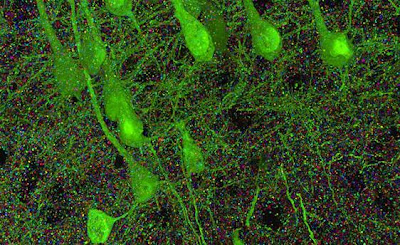fMRI Neurofeedback Opening Windows into the Brain
U Penn researchers recently used fMRI neurofeedback in an attempt to discover if they could teach cocaine addicts to control certain brain functions.
Childress asked 11 healthy controls and three cocaine addicts to watch a feedback screen while alternately envisioning two 30-second scenarios: Repeatedly swatting a tennis ball to someone, and navigating from room to room in a familiar place. By analyzing whole-brain activity, researchers found that a part of the brain called the supplementary motor area was most active during an imagined game of tennis. They then linked this pattern to an upward movement of a computer cursor. They did the same with the navigation task, linking it to downward movement of the cursor. After four cycles or fewer—less than five minutes of training—the subjects had learned to alternate between the two states of mind, as well as associate each one with its corresponding cursor position. From there onward, they could move the cursor up or down with their thoughts.As mentioned parenthetically above, the combination of EEG plus fMRI neurofeedback offers a superior tool, in that both spatial and time resolutions are optimised. When using neurofeedback to facilitate a brain-machine interface, one wants to optimise time resolution. When using neurofeedback to train in controlling brain responses, one would want optimal spatial resolution. As training programs become more specialised, each small improvement in spatial and temporal resolution will be treasured by researchers.
...The researchers found that both addicts and healthy people could control their state of mind equally well, something Childress says is encouraging for future studies. "The patients who have trouble controlling their craving could still demonstrate control over this sort of non-emotional test," she says. That confirms what earlier studies had suggested: Addicts' cognitive control issues are not linked to more general thinking, but instead limited to more emotionally charged thoughts, like cravings.
However, Childress's team will need to develop specialized tasks to figure out how to apply this to addiction and other disorders. For therapy, "You really need feedback from localized regions that have to do with their disease, and have people learn to control them," says Rainer Goebel, a professor of psychology at the University of Maastricht in the Netherlands who has done similar work with depression patients. _TechnologyReview
Powerful EEG neurofeedback tools have been used for assisting in brain rehabilitation after brain trauma or infarct, in treating severe autism, for treating depression, and in other neuro-psychiatric conditions. Clinicians are typically more daring than researchers when using such relatively safe tools, given the difference between the clinical environment and the research culture. Researchers are quite cautious, and appear almost plodding in their careful step by step approach to scientific knowledge. Clinicians, on the other hand, are often desperate to help in cases which seem hopeless. They are willing to take intuitive leaps, and work with what they find.
The difference between attempting to build a structure of knowledge from the bottom up, brick by brick, vs. the sudden achievement of disconnected but profound findings when taking a leap of faith, contributes to the wall of incomprehension which often grows between the research and the applied branches of a given science.
As fMRI neurofeedback tools (and combined fMRI-EEG tools) eventually move from the hospital and lab into the outpatient clinical setting, the possibilities of sophisticated feedback tools combined with VR techniques in normal brains, should be astounding. Non-invasive, non-toxic tools such as neurofeedback, offer little risk in comparison with surgical, pharmaceutical, invasive electrical, and radiologic tools that might be used in a clinical setting. Clinicians typically feel free to try new and unconventional approaches when there is little to lose and much to gain.
Al Fin Futurists place the transformative potential of advanced neurofeedback technologies at the highest setting.
Labels: brain imaging, brain machine interface, BrainWorks, neurofeedback

0 Comments:
Post a Comment
“During times of universal deceit, telling the truth becomes a revolutionary act” _George Orwell
<< Home